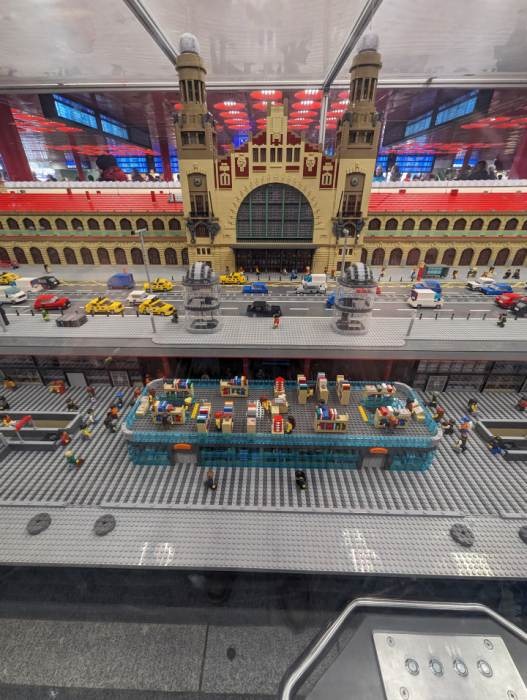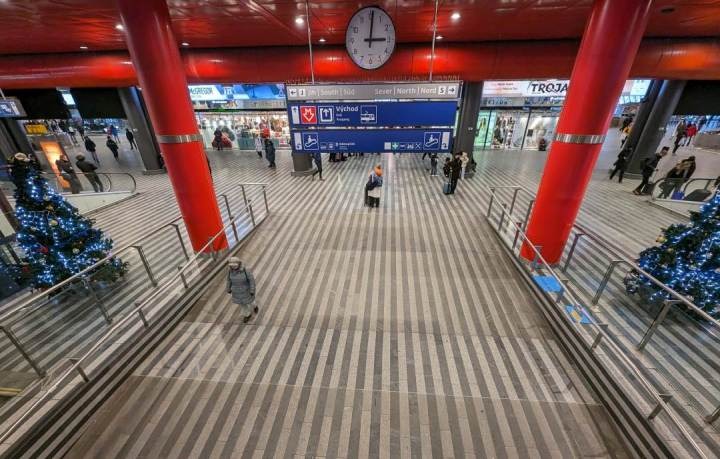Three partners (DPP, Správa železnic and the City of Prague, represented by IPR) came together around Prague’s “Sherwood” (the sarcastic nickname given to the park in front of the main station). The primary idea was to revitalize and create something functional, pretty and positive for citizens. The effort was truly commendable! After all, the whole area suffers from years of neglect, so creating a truly functional park and using new tram lines to connect the area to Prague is something we all support. Even though it’s obviously no simple matter.
But one of the questions that’s come up since Henning Larsen was announced as the winner of the design competition is the role of IPR going forward in the process. No one is questioning its critical role in the development of the city, nor its role as a mentor. The institution is also important as a manager of competition bids, in creating limits for development zones and even as a partner during discussions with investors.
But what precisely is its role as a leader and manager of competitions? “Novy hlavák” is a textbook example that demonstrates to what extent IPR is able and willing to pay attention to all inputs with the appropriate respect and humility. Was holding the competition the goal itself, or was it merely a means to an end? It’s an important question, as it determines what comes next: Accept the winning design and move on? Or will the principals in the process roll up their sleeves, because it’s only now that the real work begins? How about IPR? Will IPR continue to lead the preparation work? Or will it just hand off responsibility to the investment department of the city to deal with?
 From what I’ve gathered, the Novy hlavák competition has laid bare the danger of not dealing with potential problems and risks pro-actively, eliminating them right at the beginning. And when the main goals of such a significant competition aren’t communicated — in time — to the wider public. No one managed to establish firm limits within which the competition’s participants would have to remain. How can there still be uncertainty over how much of the station could be torn down? Did anyone speak with the owners of the authorship rights of the original station ahead of time? Vague, preliminary statements made months or years ago aren’t enough.
From what I’ve gathered, the Novy hlavák competition has laid bare the danger of not dealing with potential problems and risks pro-actively, eliminating them right at the beginning. And when the main goals of such a significant competition aren’t communicated — in time — to the wider public. No one managed to establish firm limits within which the competition’s participants would have to remain. How can there still be uncertainty over how much of the station could be torn down? Did anyone speak with the owners of the authorship rights of the original station ahead of time? Vague, preliminary statements made months or years ago aren’t enough.What exactly is the problem with the bid from Henning Larsen? What don’t people like? What don’t they agree with? What are they fighting? Why has a petition been started against it?
Let’s be clear: it’s not because of the new tram lines, which is the responsibility of Prague’s Transport Company (DPP). Nor are the ideas for the park (owned by the City of Prague) the source of the problem. The problem is the design and the interventions in the existing station, which is owned by Správa železnic. And while an unbelievable number of fans of the existing building have suddenly come out of the woodwork to declare their love for it, its future is ultimately in the hands of its owner.
As such, Správa železnic was responsible for the preparation of that portion of the competition brief. Did its own employees do the work? Or were external consultants brought in to help? Either way, it’s unbelievable that the risks embedded in such a complicated zone took the company by surprise.
Správa železnic is the operator of rail transport in the Czech Republic. It’s the company in charge of realizing not just the country’s high-speed dreams, but also for repairing stations and keeping them in good working order. Anyone who spends times waiting in train stations will know how successful they are at this. For a company with so much power, Správa železnic’s public image is remarkably limited. Few people realize that Správa železnic is one of the biggest investors in the country with a vast budget to work with.
Unfortunately, most people accept that Správa železnic gave up long ago on innovation, on operational management and on taking responsibility for its decisions. In this case, what’s important is that it appears to have underestimated its role as a developer. It’s a role that requires it to protect and promote its own interests, and to patiently explain what it spends such enormous sums of money on — and why. It certainly doesn’t appear to have done that in the case of the Novy hlavák competition.
The result is that only now — after the competition’s winning bid was announced — troubling questions has arisen that could have been dealt with better while the jury was still in discussions. The jury didn’t think about these issues, because they’d been assured that everything will be fine, or that that any remaining questions could be dealt with (or could be solved later on). That approach hasn’t worked out too well.
Is the wave of negative reactions really so surprising? Perhaps the competition itself and public reactions to it simply mirror today’s bitterly divided society. In no way is any of this Henning Larsen’s fault, since they were simply operating within the available framework.
It doesn’t help that urbanists and architects often use fancy jargon the public doesn’t understand and that they set competition parameters the wider public may not share. Is a good view of the Fanta building from the park and from Opletalova street really more important that keeping passengers warm as they wait? Does Správa železnic really prefer tearing down part of the existing building at the expense of a huge reduction in commercial space? And no matter how good the design is, does Správy železnic really know just how much care and maintenance wooden structures require? The poor condition of stations around the country suggest that regular maintenance and cleanliness are skills the company has yet to master.
For some, this competition illustrates the divided reality of today’s society. Trying to use it as an example of a “conspiracy of the elite” is clearly going too far. But it risks playing into the hands of those who promote such narratives.
This train has only just left the station.
Also in ThePrime
Henning Larsen Architects shocks with design for Prague’s Main Station






